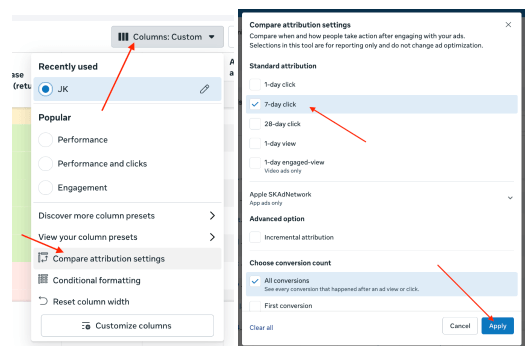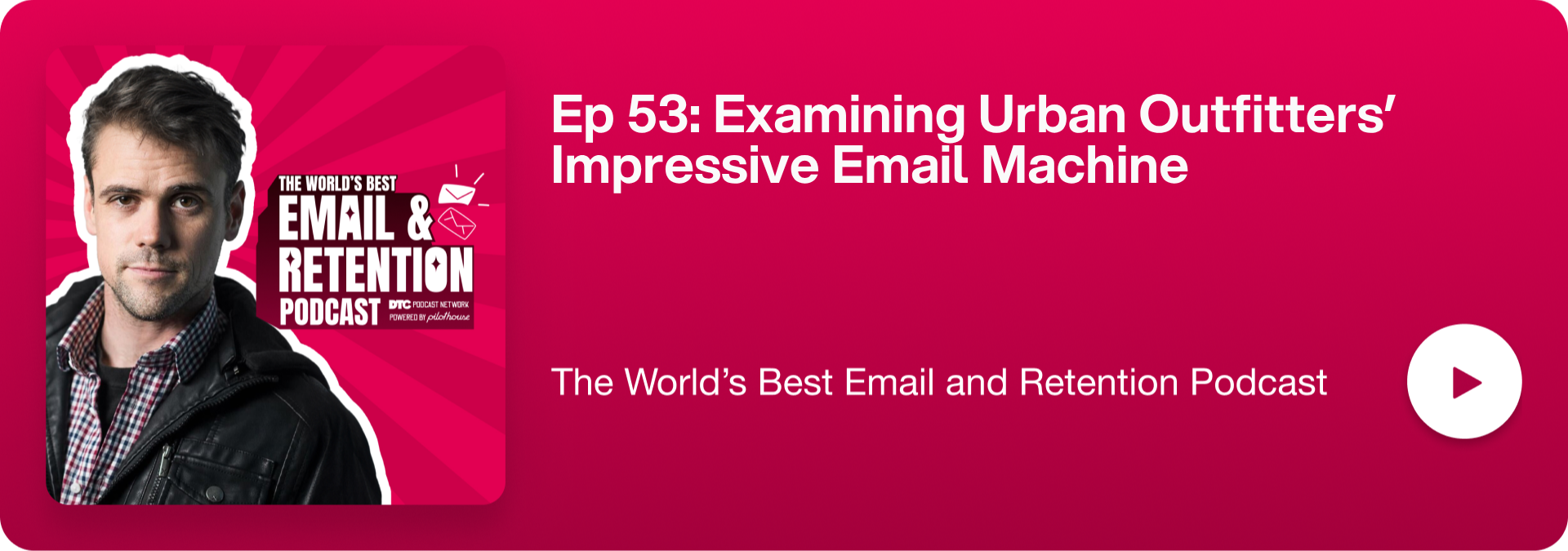
Back

Content
Content

Welcome to the DTC family!
Oops! Something went wrong while submitting the form.

Back

Content



Good morning,
Here’s what you’ll find in today’s DTC:
⚡ Scale Ads Like A Pro
Run this attribution test to unlock growth.
👚 Lessons from Urban Outfitters
Analyzing the apparel brand’s retention wins.
💀 Silent CRO Killer
Get rid of this on your checkout page.
You’re reading this newsletter along with new subscribers from: Gold Holly, Electronic Express, and Norbar. 👋

🛍️ Imagine, Your Customers Flowing From Intent To Purchase, Effortlessly. This Is The Future Of Commerce
Introducing Swap’s Agentic Commerce Platform—an AI-native infrastructure transforming how merchants sell, plan, and grow. 📈
🔮 AKA, the future of your store.
This storefront allows consumers to go from intent to purchase in a fully AI-native environment. 🛒
What does it mean for your shoppers? Ease. From conversational search to chat-native checkout, it makes the shopping experience joyful again. 🎉
What does it mean for you? Up to 2X higher conversion than traditional storefronts, with higher cart sizes, faster discovery, and stronger loyalty. 💵
🌟 On top of that, Swap products are baked in. Exchanges, returns, tracking, demand planning, cross-border and beyond—It all just got easier.
👉 Swap gives you the power to sell anything, anywhere—from one platform.
Ready to step into your future?
* sponsored

💰 Run This Attribution Test on Meta Before Q4 Takes Off
In 2025, the default scaling strategy on Meta is vertical scaling by pushing more budget into top campaigns, running fewer campaigns, and letting Meta’s algorithm allocate budget where it sees the most opportunity.
This typically works well for the majority of the year, but when Q4 competition peaks and CPAs increase, vertical scaling alone can leave you handcuffed.
Pilothouse shares this is where horizontal scaling becomes an important tactic, and understanding what attribution settings work the best for your brand can be powerful in continuing to scale in a competitive landscape.
Campaign attribution settings define how conversions are credited to your ads and what audience Meta is trying to target with the different settings.
7DC1DV (7-day click + 1-day view) might work well during evergreen periods, but when you’re trying to maximize Q4 performance, small shifts in attribution can unlock major opportunities.
Here is one test that the Pilothouse team recommends setting up with attribution settings:
7DC1DV vs 7DC
How the Settings Work:
Test Structure:

💡 Pilothouse recommends adding the 7-day click attribution setting and a comparison and using that to determine true success.
For example, your 7-day click, 1-day view campaign might actually yield a better 7-day click ROAS compared to the 7-day click campaign, so it’s important to review using multiple attribution windows.


Give this attribution test a try in your account and let us know how it goes!

📲 The Future Called. It Said, Get In, We’re Going Shopping.
Swap’s Agentic Commerce Platform is so much more than just an AI-native storefront environment.
It's the ability to sell anything, anywhere, all from one platform.
With Swap's Agentic Commerce Platform, you give your business and your customers the ability to step into modern commerce.
Your customers will enjoy: The automated storefront experience. ✅
While you see the benefits from: One platform connecting logistics, tax, and compliance. ✅
Powered by AI tools driving the future of commerce, this offering is designed to help customers seamlessly move through the buying process—from discovery to checkout.
This changes the way customers shop. Want to be at the forefront of that change? 👇
* sponsored

Halloween spending is projected to hit a record $13.1 billion this year, up from $11.6 billion last year, according to the NRF.
Despite higher prices driven by tariffs, consumer enthusiasm for Halloween remains strong across age groups.
So build your seasonal campaigns early and capitalize on consumers' willingness to spend for experiences, costumes, décor, and treats.

🎧 How Urban Outfitters Uses Email + Onsite Continuity to Drive More Revenue
When you break down Urban Outfitters’ email and onsite strategy, one thing becomes clear: continuity and simplicity drive retention.
Instead of obsessing over clever subject lines or long-winded copy, UO wins by making sure every email, category page, and homepage feels like part of the same experience.
On this episode of the TWBERP podcast, Jordan from Pilothouse shares some takeaways your brand can use starting today:
1. Let the Images Do the Work
Fashion emails shouldn’t be text heavy. Because let’s be honest, no one’s reading it. They want eye-catching visuals. It’s all about putting together looks.
👉 If your product is highly visual, test emails with less text and full-bleed images.
2. Use Browse Abandonment to Replicate Window Shopping
One genius idea: repurpose UO’s image-heavy template for browse abandonment emails.
👉 This creates the same experience as walking past a store window.
3. Match Emails to Landing Pages for Continuity
Every landing page should answer these questions:
Urban Outfitters nails this by reusing the same photography from their emails at the top of the category page.
That continuity removes friction and reassures the shopper they’re in the right place.
👉 Audit your own site: do your emails, category pages, and homepage tell the same story?
4. Stop Using Carousels on Category Pages
Static hero images beat carousels. Why?
👉 Replace your category page carousel with a still image from your latest campaign.
5. Double Down on Product Discovery
UO makes it easy for shoppers to keep exploring:
This combo keeps shoppers engaged whether they’re ready to buy that product or not. If they are, it raises AOV.
👉 If you’re only running one type of recommendation block, add the other.
6. Layer in Culture for Retention
Urban Outfitters doesn’t just sell clothes. They sell culture to a Gen Z audience.
👉 If your brand has cultural equity (music, community, lifestyle), bake it into your retention strategy.
👉 Listen to the full episode with Jordan here.

CRO expert Dave Diederen shares how hidden shipping fees kill conversions.
When costs only appear at checkout, shoppers feel tricked.
The fix is simple: show shipping estimates in cart, use geo-based estimates, and set clear free-shipping thresholds.
Transparency builds trust, prevents abandoned carts, and can even lift AOV in some cases.

🤖 Your shoppers are using AI. So why aren’t you using it for your storefront? Swap’s Agentic Commerce Platform provides an agent-enabled shopping experience that drives conversion from discover to checkout. Learn more here. *
* sponsored

📥 Got a B2B Biz?
Join dozens of B2B companies finding demand-gen success through our niche community of 150k brand leaders and founders this year. Talk to our team to learn more.
Have you heard our latest podcasts?
Don’t forget to rate the DTC Podcast on Apple (⭐️⭐️⭐️⭐️⭐️)
DTC Newsletter is written by Rebecca Knight and Frances Du. Edited by Eric Dyck.
Please note that items in this newsletter marked with * contain sponsored content.

